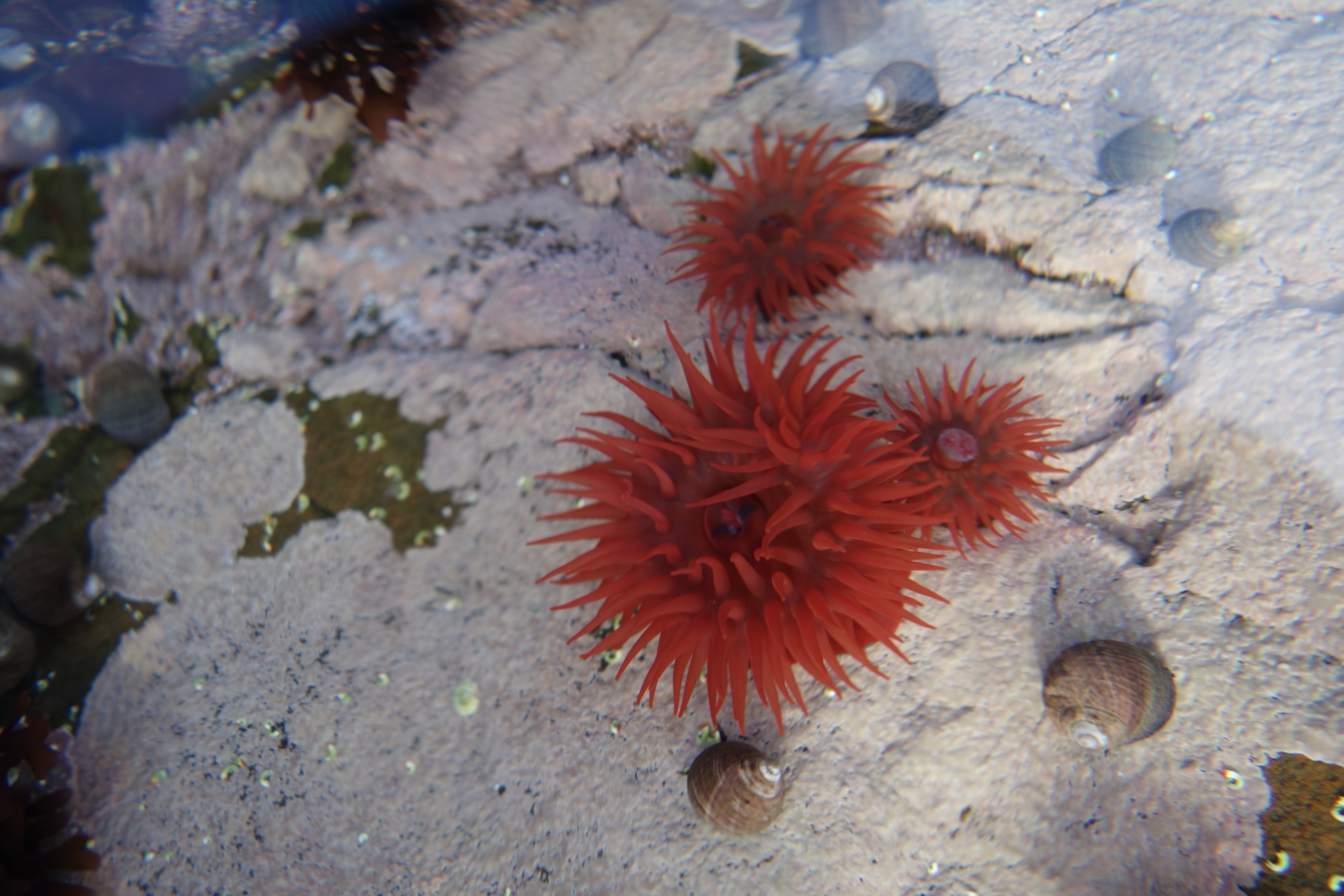A sun bathing fish, surely not? But yes, that is exactly what this little shanny was doing, soaking up the sun’s rays in water no more than a few millimetres deep by the edge of the rockpool.
I was rockpooling near Johnshaven and because the sun was shining strong, I kept a special look out for shannies. Elongated and a member of the blenny family, it is one of our commoner rockpool fish and, rather strangely, likes nothing better than to bask in the sun with its body almost totally out of the water.
Being cold blooded, I presume they do so to warm up and save energy, but there must also be risks attached by exposing themselves so much. However, the shanny is very wary and well camouflaged, and if you approach too close, it will quickly scoot into deeper water within the pool.
The shanny can happily survive for several hours out of water and if it can’t find a suitable pool when the tide recedes it will spend the time under wet seaweed or in a rocky crevice. The shanny has even been known to slither across rocks from one rockpool to another, hence why it is sometimes known as the sea frog.
This stretch of coastline between Johnshaven and Gourdon has long been a favourite area of mine for exploring inter-tidal marine life. There are a huge variety of creatures found here and I never tire from seeking them out.
Not long after finding the shanny, I discovered some beadlet anemones in a pool on the lower shore. Deep crimson in colour, I can never resist drawing my finger over their tentacles. They are sticky to the touch and are so designed to entrap tiny marine creatures that pass by. Once disturbed, the anemone closes up and shrinks into a little red blob.
I also came across pink-tinged coral weed in some of the pools. Although it does look a bit like coral, it is in fact a calcified red seaweed that is shaped like a fern. You always tend to find coral weed in more exposed coastal areas and to me its presence signals that the seas around are clean and healthy.
It is easy to overlook some of the commoner creatures in the inter-tidal zone such as limpets and winkles. This is a pity, for they are all truly remarkable. Limpets, for example, are the consummate rocky shore survivors. Just imagine the wide extremes they endure, from cold winter frosts to scorching summer days, and then being submerged by the tides and enduring ferocious pounding from storms.
But these algal grazers remain safe within their pyramidal shells. Try and dislodge one and the sheer strength of that famous suction power soon becomes apparent. Indeed, they will even leave scars on rock surfaces, such is the tenacity of their hold in this most challenging of natural environments.
Info
Shannies are generally small fish, those in rockpools usually only a few centimetres long, although below the low tide mark they can grow up to 16cm. They can change colour to match their habitat.










